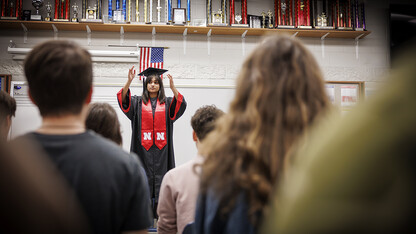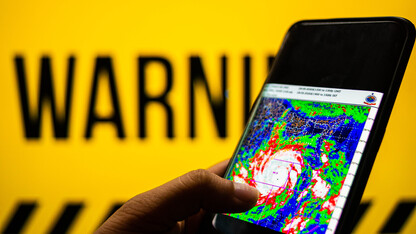· 4 min read
Study: Digital distraction in class is on the rise

College students spend more class time than ever playing with their smartphones and other digital devices, according to a new University of Nebraska-Lincoln study.
Students check their phones and other digital devices in class more than 11 times a day on average, according to the survey of 675 students in 26 states. The study was published online Jan. 15 in the Journal of Media Education.
It’s not just a quick glance to see if someone’s trying to reach them. Students in the study estimated that, on average, they spent 20 percent of their classroom time using digital devices for activities unrelated to class – mostly text messaging but also e-mailing, web-surfing, checking social media and even playing games.
“That can add up,” said Barney McCoy, associate professor of broadcasting and journalism who conducted the survey. “During the typical four years they’re in college classrooms, the average student may be distracted for two-thirds of a school year.”
The study’s purpose was to learn more about so-called Millennial students’ behaviors and perceptions regarding their classroom uses of digital devices for non-class purposes.
Students acknowledged the costs of monitoring digital devices instead of their professors: They admitted they don’t pay attention, miss instruction, that their grades may suffer, and they can be called out by their professors. Yet most respondents indicated they can’t or won’t change their behavior.
Nearly 30 percent believed they could use their digital devices without distracting from their learning. More than one-fourth said it was their choice to use a digital device when they wanted. Nearly 13 percent said the benefits of using digital devices for non-class purposes outweighed the classroom distractions they caused. More than 11 percent of the respondents said they couldn’t stop themselves from using digital devices.
“Most were aware of the downside in their behavior when it comes to their ability to learn,” McCoy said. “But they have justified that tradeoff. It’s not so much a sense of entitlement; it’s their desire to be connected and not wanting to miss a message.”
He said the findings indicate faculty as well as students must change their practices to adapt to the reality of phones and other digital devices. He said boredom was the top reason students gave for turning to their devices during class.
“This suggests a need for students to learn more effective self-control techniques to keep focused on the learning at hand in classroom settings,” McCoy said. “It also suggests instructors might benefit from learning and experimenting with new ways to engage college students in classroom activities.”
The study is the second time McCoy has surveyed college students on this topic. Since his first survey in 2013, smartphones have become ubiquitous among students and basic cell phones have fallen out of favor.
The latest study found more students checking their devices with more frequency than in 2013. One-third of responding students said they used digital devices for non-class purposes at least 10 times a school day in 2015, compared to 30 percent in 2013. In 2015, the number of students who never used their devices for non-classroom purposes dropped to 3 percent, compared to 8 percent in 2013.
The 2015 survey was McCoy’s first attempt to measure how much class time students spent being distracted by digital devices. Nearly 11 percent said they spent more than 50 percent of their class time using their phones and other digital devices for non-class purposes.
Students in the survey were overwhelmingly opposed to banning digital devices from the classroom. A majority said it didn’t believe students should be penalized for using them in the classroom.
Study respondents included freshmen through graduate students attending colleges and universities from the following states: Arkansas, Arizona, California, Colorado, Connecticut, Delaware, Florida, Georgia, Iowa, Illinois, Kansas, Massachusetts, Michigan, Minnesota, Missouri, Nebraska, New York, New Jersey, North Carolina, Ohio, Pennsylvania, South Dakota, Tennessee, Texas, Virginia and Wisconsin. Most were mass communications majors, but participants also included marketing, business, law, education and agriculture majors.







